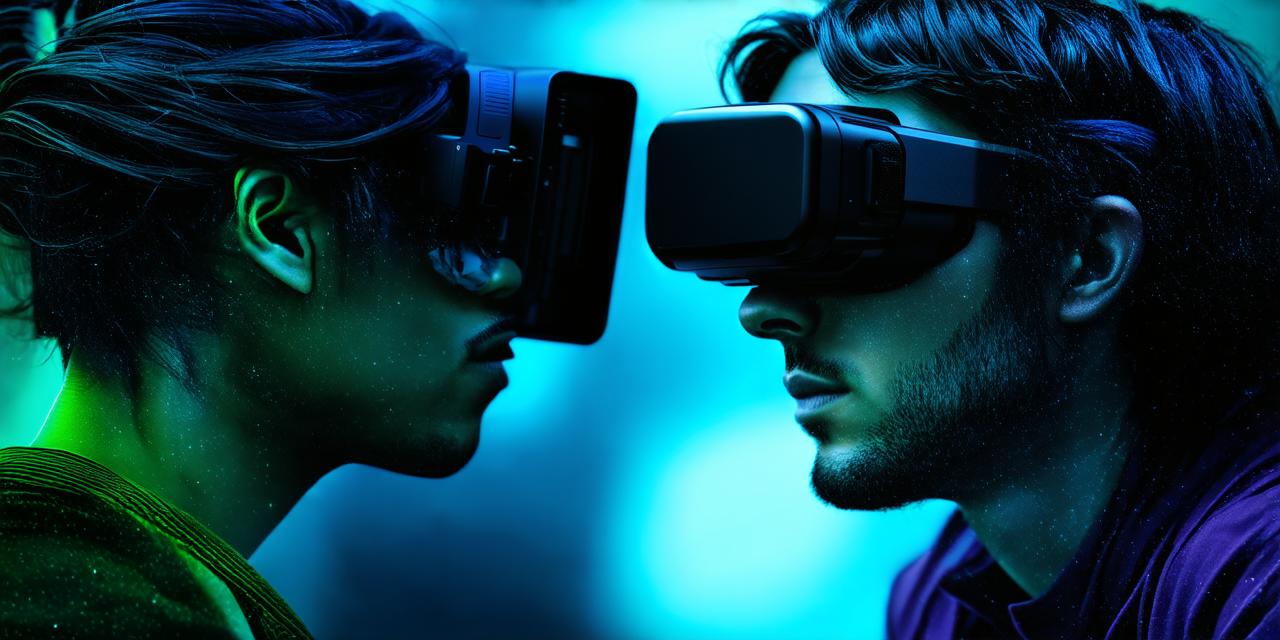What is Developmental Coordination Disorder?
Developmental coordination disorder (DCD) is a neurodevelopmental condition that affects motor skills and coordination. It is often diagnosed in children who are otherwise healthy, but struggle with activities such as writing, tying shoes, and playing sports. DCD can be caused by genetic factors, brain injury, or environmental factors such as premature birth or low-income families.
DCD affects approximately 1 in 500 school-aged children in the United States and can lead to a range of problems in daily life, including difficulty with walking, running, and performing everyday tasks. While there is no cure for DCD, treatments such as physical therapy, occupational therapy, and speech therapy can help improve motor skills and coordination over time.
Virtual Reality as a Treatment Option for DCD
Virtual reality (VR) technology has emerged as an effective treatment option for developmental coordination disorder (DCD). VR involves the use of a headset or other device to create a simulated environment that can be used to practice and improve motor skills and coordination.
Case Studies: Successful Use of VR for DCD Treatment
Case Study 1: John’s Story
John is a 9-year-old boy with developmental coordination disorder (DCD). He struggled with writing, tying shoes, and playing sports. His parents tried various treatments, but he didn’t see much improvement. That’s when they decided to try virtual reality therapy.
John was introduced to VR technology that simulated everyday activities such as writing and tying shoes. With guidance from a therapist, John practiced these activities in the virtual environment for several weeks. He found the experience fun and engaging, and he was able to improve his motor skills and coordination over time.
After six weeks of VR therapy, John’s parents noticed significant improvements in his writing and tying shoes. They were also excited to see him participate more in sports activities such as basketball and soccer.
Case Study 2: Sarah’s Story
Sarah is a 7-year-old girl with developmental coordination disorder (DCD). She struggled with walking, running, and performing everyday tasks. Her parents tried various treatments, but she didn’t see much improvement. That’s when they decided to try virtual reality therapy.
Sarah was introduced to VR technology that simulated different activities such as walking, running, and balancing. With guidance from a therapist, Sarah practiced these activities in the virtual environment for several weeks. She found the experience fun and engaging, and she was able to improve her motor skills and coordination over time.
After eight weeks of VR therapy, Sarah’s parents noticed significant improvements in her walking and balancing abilities. They were also excited to see her participate more in sports activities such as gymnastics and dance.
Benefits of Using VR for DCD Treatment
Virtual reality (VR) technology offers several benefits for children with developmental coordination disorder (DCD). These include:
- Customizable Experience: VR therapy can be customized to meet the specific needs and abilities of each child. This allows therapists to focus on specific areas of improvement and tailor the experience to the child’s individual needs.
- Engaging Environment: VR technology provides a fun and engaging environment that can help motivate children to practice their motor skills and coordination. Children are more likely to participate in therapy if they find it enjoyable.
- Immediate Feedback: VR technology provides immediate feedback on a child’s performance, allowing therapists to adjust the difficulty level of the task and provide real-time guidance. This can help children learn from their mistakes and improve their skills more quickly.
- Accessibility: VR therapy can be done in the comfort of the child’s home or school, making it more accessible for children who may have transportation barriers or other challenges.
- Cost-Effective: While VR technology can be expensive to purchase, it is cost-effective compared to traditional physical therapy or occupational therapy.
Conclusion
Developmental coordination disorder (DCD) affects approximately 1 in 500 school-aged children in the United States and can lead to a range of problems in daily life. While there is no cure for DCD, treatments such as physical therapy, occupational therapy, and speech therapy can help improve motor skills and coordination over time. Virtual reality technology has emerged as an effective treatment option for DCD, offering customizable experiences, engaging environments, immediate feedback, accessibility, and cost-effectiveness. With ongoing research and development, VR therapy may become a mainstream treatment option for children with DCD in the future.
FAQs
Here are some frequently asked questions about developmental coordination disorder (DCD) and virtual reality (VR) therapy:
What is developmental coordination disorder (DCD)?
Developmental coordination disorder (DCD) is a neurodevelopmental condition that affects motor skills and coordination. It is often diagnosed in children who are otherwise healthy, but struggle with activities such as walking, running, and performing everyday tasks.
Is there a cure for developmental coordination disorder (DCD)?
No, there is no cure for developmental coordination disorder (DCD). However, treatments such as physical therapy, occupational therapy, and speech therapy can help improve motor skills and coordination over time.
What is virtual reality (VR) technology?
Virtual reality (VR) technology involves the use of a headset or other device to create a simulated environment that can be used to practice and improve motor skills and coordination.
